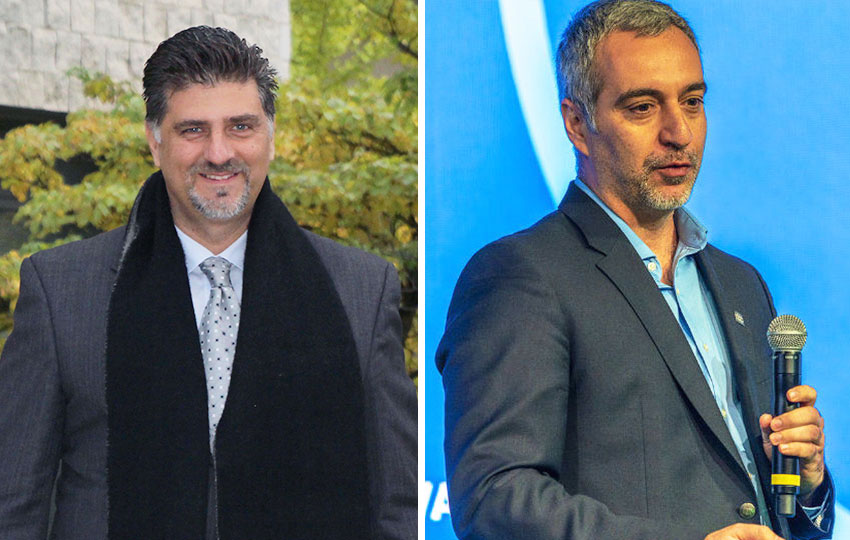1) Let us start with a general question. What is it that your laboratory does exactly?
Panagiotis Vlamos:
Bioinformatics and Human Electrophysiology laboratory’s (BiHELab) goal is to help bridge the translational gap from data to models and from models to drug discovery. and personalized therapy by fostering collaborations and developing original quantitative approaches to biological and clinical problems. BiHELab focuses on recent advances in neurodegeneration, ranging from basic science to clinical and pharmaceutical developments. The main objective of the laboratory is the creation of new and effective protocols for the diagnosis of various types of dementia and neurological disorders through identification, mapping, biological analysis as well as mathematical modeling and simulation of all factors associated with these diseases, in order to improve existing techniques and to design new targeted treatments. BiHELab’s main research interest is understanding the causes of brain aging and identifying the basis by which aging promotes the development of brain pathology and brain diseases such as Alzheimer’s disease.
2) Give us a few information about your current, very important project.
Panagiotis Vlamos:
The project is called “Computational biomarkers in Precision Medicine’’. It integrates the innovative AD Blank Spot methodology (a new tool applyind biomarkers Id correspondence to already existing drugs), for the study of neurodegenerative diseases developed and applied in recent years at the Laboratory of Bioinformatics and Human Electrophysiology of the Ionian University.
3) What is the purpose of this project?
Ioannis Tarnanas:
With this project, we aim to further investigate and evaluate innovative computational biomarkers in a wide range of neurodegenerative diseases such as Alzheimer’s disease, Parkinson, CMT2A, ALS, Multiple Sclerosis and traumatic encephalopathy.
4) Why is the research you are conducting so important for the medical world?
Ioannis Tarnanas:
BiHELab, Takeda-Altoida partnership and the Foundation for Neurological Diseases are interested in collaborating regarding the assessment, improvement and implementation of the AD Blank Spot project and the digital technology developed by Altoida (AMD: Altoida Medical Device) to better identify subjects at risk to develop dementia with a diagnosis of Alzheimer Disease (AD) for inclusion into a clinical trial aimed to assess novel treatment in order to modify the disease progression and improve the condition of AD patients.
5) What kinds of results are you expecting?
Panagiotis Vlamos:
The development of theoretical evidence that the AD blank spot in combination with the Altoida medical device and other biomarkers can predict the trajectory of preclinical or early clinical individuals in differerent stages of the disease. We also expect to develop a mathematical model for trajectories in order ro quantify deviation in the trajectory progression and simulate the effects of a disease modifying drug intervention. Furthermore, we anticipate to be able to stratify preclinical asymptomatic subjects with potential AD diagnosis according to AD blank spot, the Altoida Medical Device and genetic biomarkers, and assess their risk of MCI development due to AD in a 5-year period.
6) How will these results reach the people that need them the most? (patients)
Panagiotis Vlamos:
This research project aims in identifying preclinical asymptomatic subjects that could potentially develop AD. Subjects at risk of AD development could take place in clinical trials that focus on modifying disease progression thus improving the patient’s quality of life.
7) Who are the partners that will help you implement this project?
Panagiotis Vlamos:
We have put together a really strong consortium of partners for this project.
BiHELab, Takeda-Altoida partnership, Harvard University Medical School, Research Center for Computational Biomarkers (RCCBm) and The Institute of Entrepreneurship Development.
We rely on each partner’s experience and know-how to successfully complete this project and to enhance the idea of innovation in the field of medical research.
8) Can you tell us what role each partner will have in the project?
Ioannis Tarnanas:
The role of the Institute of Entrepreneurship Development in this project is to develop the business model for the product, making it easy for it to be integrated into the medical market, thus making it possible for bridges to be built between entrepreneurship and the scientific field.
Altoida will make available to the collaboration their digital technology, device, database, computational and neuropsychological knowledge focused on dementia.
BiHELab will make available the AD Blank Spot model for the 40 distinct stages of the disease that can be related with many more precise cases, thus categorizing each patient.
Takeda-Altoida partnership will provide its know-how regarding the TOMMORROW study.
The foundation for Neurological Diseases (Harvard Medical School) will support the research of new assays capable of detecting specific molecules linked with the disease (e.g. all forms of Aβ and MTBR- containing fragments of tau).
9) How do you, as a scientist, view the future of this project?
Panagiotis Vlamos:
The future of this joint research programme is to further investigate and evaluate innovative digital biomarkers in a wide range of neurodegenerative diseases such as Alzheimer’s Disease that could result in the development of a product, that would allow the improvement of patients’ quality of life.
10) After the completion of the project, are you planning to get involved in more projects in the same field?
Panagiotis Vlamos:
We are always interested in particitipating in projects that focus on innovative research regarding the prediction, prognosis and diagnosis of neurodegenerative diseases.

